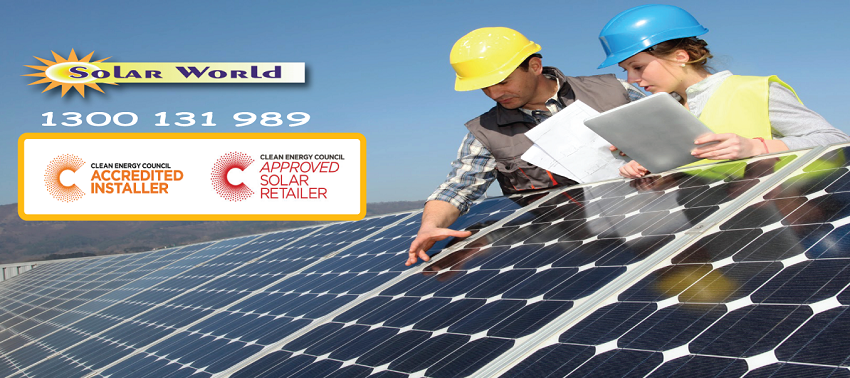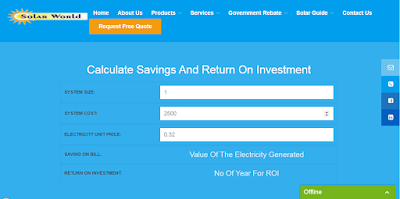Read The Artile At
Solar World Website.
Solar System Size Help:
Not sure what size or KW system you need for you? No worries, here are some information about solar pv systems with different capacities or KW. This will partially help you on determining solar system size or elae,
Solar World is always here to help you with as much information as possible about
solar pv systems.
The size of your solar PV system will depend on,
- The portion of the electrical consumption that you wish to generate.
- The unshaded area available that is available for your solar panel installation.
- What is the budget you have in your mind for the solar PV system?
Please feel free to request an obligation free price quote and information from
Solar World, just click here for the free solar price quote from CEC Certified installers across Australia.
This is one of least KW system that we believe would be a minimum requirement for any one, below this capacity might not serve the actual purpose of going for solar or renewable energy.
⇒ 12 X 250 W
Solar Panels
12 x 250 Watt high efficiency solar panel (3000 Watts)
⇒ 3 kW
Inverter
Extended 10 years warranty option available on selected inverter
⇒ Certified Australian Standard mountings
Specially trusted by maximum Australian
⇒ 25 – 30 years performance warranty
10 – 12 Years manufacturers warranty on photovoataic panels
⇒ Australian standard high quality electrical material
Installation by CEC accredited electricians. 120 months workmanship warranty available.
OTHER CRITERIA:
Must have 24 square meter of roof space with proper sunlight, any roof like tiled, tinned or flat except asbestos roof is suitable to install 3 KW solar panel system. Just request solar panel price quote and we can have an energy assessment done across Australia to see how much electricity a 3 KW
solar panel system can produce from your roof.
5 KW Solar PV System Technical Details:
⇒ 20 X 250 W
Solar Panels.
20 x 250 Watt high efficiency solar panel (5000 Watts)
⇒ 5 kW
Inverter.
Extended 10 years warranty option available on selected inverter
⇒ Certified Australian Standard mountings
Specially trusted by maximum Australian
⇒ 25 – 30 years performance warranty
10 – 12 Years manufacturers warranty on photovoltaic panels
⇒ Australian standard high quality electrical material
Installation by CEC accredited electricians. 120 months workmanship warranty available.
OTHER CRITERIA:
Must have 40 square meter of roof space with proper sunlight, any roof like tiled, tinned or flat except asbestos roof is suitable to install 5 KW solar system. Just request solar price quote and we can have an energy assessment done across Australia to see how much electricity a 5 KW solar system can produce from your roof.
10 KW Solar PV System Technical Details:
⇒ 40 X 250 W Solar PV
Panels
40 x 250 Watt high efficiency solar panel (10,000 Watts)
⇒ 10 kW
Inverter
Extended 10 years warranty option available on selected inverter
⇒ Certified Australian Standard mountings
Specially trusted by maximum Australian
⇒ 25 – 30 years performance warranty
10 – 12 Years manufacturers warranty on photovoataic panels
⇒ Australian standard high quality electrical material
Installation by CEC accredited electricians. 120 months workmanship warranty available.
OTHER CRITERIA:
Must have 40 square meter of roof space with proper sunlight, any roof like tiled, tinned or flat except asbestos roof is suitable to install 10 KW solar system. Just request
solar price quote and we can have an energy assessment done across Australia to see how much electricity a 10 KW solar system can produce from your roof.
Please go for CEC certified solar system installer as solar system efficiency greatly depends on proper installation and we give you quote only from
CEC (Clean Energy Council, Australia) certified installer.
The smartest thing would be to understand your energy consumption and make the purchase decision. For professional advise on solar system design (Solar System Size) and competitive price quote from Solar World click Request Consultation
1300 131 989







